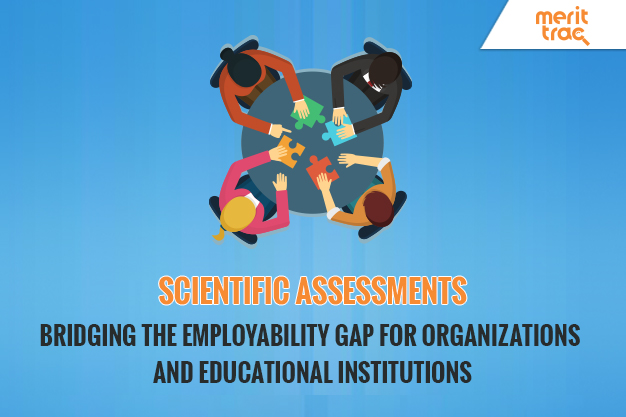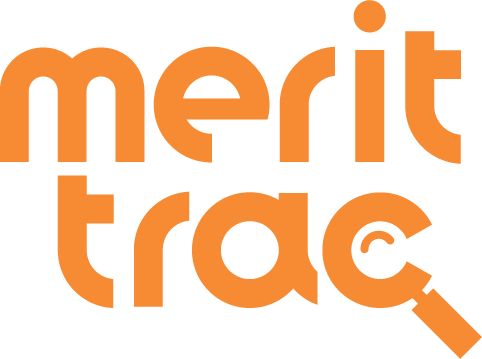
Scientific Assessments: Bridging the Employability Gap for Organizations and Educational Institutions
Date: 10/12/2018 | Posted by: MeritTrac | Category: Assessment , Employability Skills , Education
In one of his recent speeches, the honorable President of India, Sri Ramnath Kovind stressed upon the need to fill the existing gaps within the Indian education system to lead the country to world-class excellence. Industry experts raise a similar concern in terms of the quality of talent needed to meet the industrial demands of a growing economy. The International Labor Organization (ILO) estimates unemployment in India to hit 18.6 million in 2018.
So, what are some of the ways to proactively fill the current skills gap? Adopting new methods and technologies such as scientific assessment tools is definitely one of the answers. Here’s how scientific assessments can help organizations and educational institutions tackle the challenge.
For organizations
-
Compressed hiring-cycle time
-
Robust talent pipeline
-
Enhanced productivity
Hiring the right talent takes time whether it’s for a highly process-oriented large scale organization or an unstructured start-up. Skilled talent is hard to come by and a company has a limited amount of time to attract candidates. In addition, the time taken to fill a critical position comes with cost implications, with longer lead times resulting in higher costs. The country’s largest IT firm TCS, chose to solve the problem by setting up its digital National Qualifier Test (NQT), thereby making its campus hiring more seamless. The tech giant has seen 175% increase in test applications in 2018 as compared to last year.
Pre-employment assessment tools help identify skills and traits in a candidate that are often not detectable through simple cognitive and psychoanalysis tests. Organizations are therefore adopting more innovative and advanced techniques to quickly attract and assess candidates for multi-functional roles. HDFC Life makes for an interesting case study in this respect. A few years ago, the bank used scientific assessments to tackle challenges associated with sourcing the right-fit candidates and mitigate high attrition rates.
Recruiters often find it challenging to test the thinking capabilities and traits of candidates, even though these can be crucial indictors of a candidate’s productivity. This is the reason why companies have been turning to assessment firms to devise online scientific tests for them. Innovative assessment firm offers tests such as Workplace Thinking Skills, Willingness to Learn, Management Success Profile and Retention Profile, to help recruiters assess traits that indicate higher productivity.
For educational institutes
-
Pre-assessed fresher talent pools
-
Strong networking between students and recruiters
-
Feedback for continuous student learning and improvement
Institutes have the onus of preparing their students for successful campus hiring. Assessing students prior to the actual hiring process will not only prepare students for the corporate experience, but also help institutes in filtering and matching their students, based on their skills and interests. Assessments allow trainers to prepare measurable records of student competencies that can be further used by companies for their hiring process. As a result, universities are now partnering with assessment companies to develop employability enhancement programs by designing long-term assessments and training interventions to be administered at the time of graduation.
Using skill assessments at the university/college level, mentors can help students find the right companies and jobs that match their skills and learning abilities. A Gartner report predicts that owing to the widening skill gap in the country, ‘digital business universities’ will emerge to meet the industry’s demand of talent. Clearly, the time is ripe for educational institutions to align their students with employers in a more advanced way.
The National Skills Qualification Framework (NSQF) aims to smoothen the transition from formal education to vocational education by building assessment frameworks that can test competencies in students, as the first step to training them. Education institutes can adopt similar measures to assess their students, enabling them to acquire new skills or upgrade their current skills.
While the task of bridging the employability gap may seem daunting, the demography dividend stands in the country’s favor, with 62% of the population falling into the working category. What is now needed is the agility to adapt and implement the technology at hand to fulfill the growing demand for skilled manpower.
Source:
- digitallearning.eletsonline.com
- en.wikipedia.org
- firstpost.com
- economictimes.indiatimes.com
- peoplematters.in
- bweducation.businessworld.in
Handpicked Articles for Futher Reading
Relevant Case Studies/Whitepapers:














 Sales Hotline: USA: +1 646 916 0939 / Others: +91 80619 14700
Sales Hotline: USA: +1 646 916 0939 / Others: +91 80619 14700


